Shuyuan Yang
Real-time Capable Learning-based Visual Tool Pose Correction via Differentiable Simulation
May 13, 2025Abstract:Autonomy in Minimally Invasive Robotic Surgery (MIRS) has the potential to reduce surgeon cognitive and task load, thereby increasing procedural efficiency. However, implementing accurate autonomous control can be difficult due to poor end-effector proprioception, a limitation of their cable-driven mechanisms. Although the robot may have joint encoders for the end-effector pose calculation, various non-idealities make the entire kinematics chain inaccurate. Modern vision-based pose estimation methods lack real-time capability or can be hard to train and generalize. In this work, we demonstrate a real-time capable, vision transformer-based pose estimation approach that is trained using end-to-end differentiable kinematics and rendering in simulation. We demonstrate the potential of this method to correct for noisy pose estimates in simulation, with the longer term goal of verifying the sim-to-real transferability of our approach.
PVUW 2025 Challenge Report: Advances in Pixel-level Understanding of Complex Videos in the Wild
Apr 15, 2025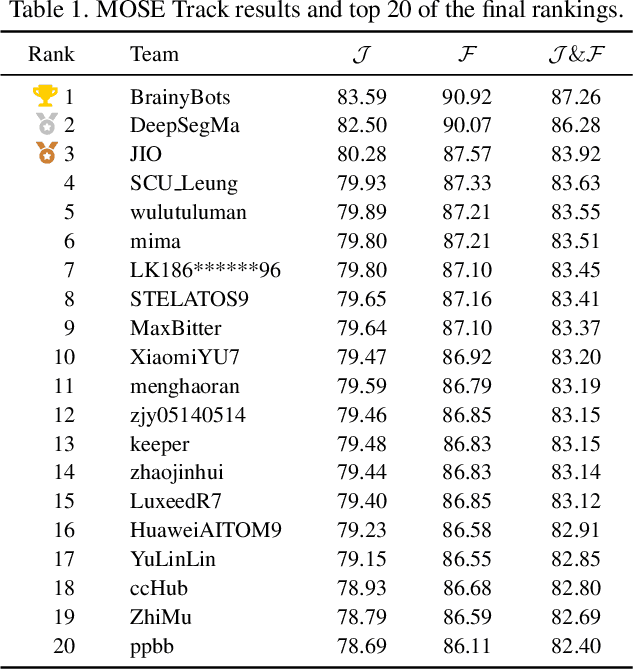
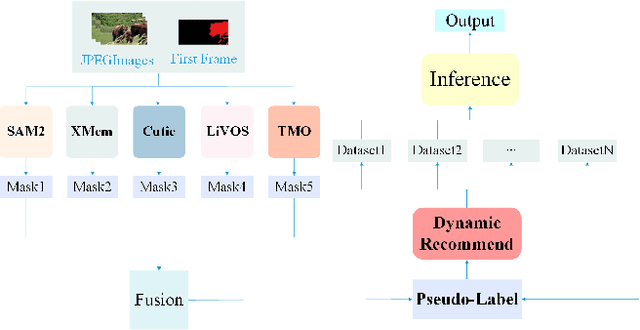
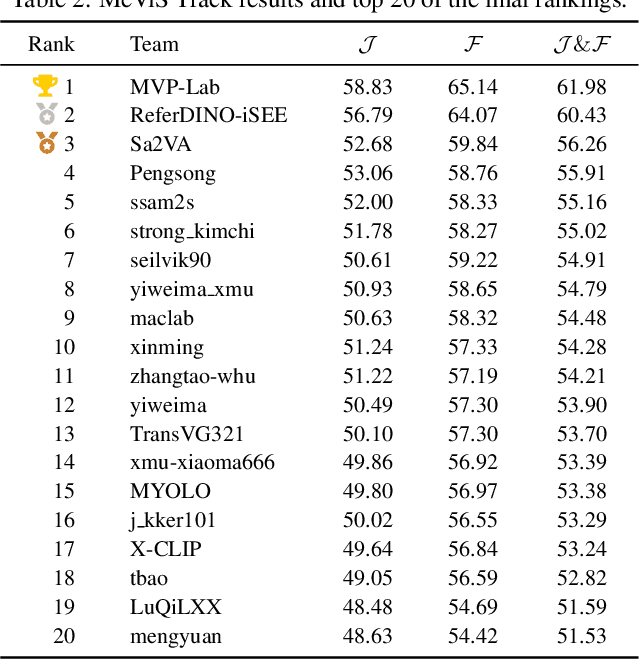
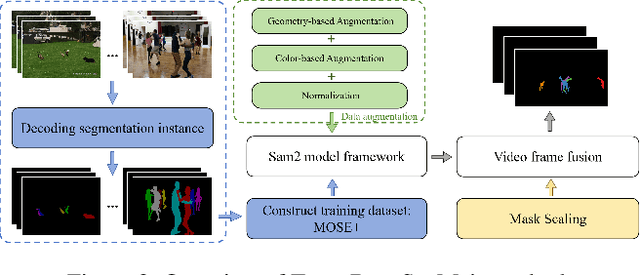
Abstract:This report provides a comprehensive overview of the 4th Pixel-level Video Understanding in the Wild (PVUW) Challenge, held in conjunction with CVPR 2025. It summarizes the challenge outcomes, participating methodologies, and future research directions. The challenge features two tracks: MOSE, which focuses on complex scene video object segmentation, and MeViS, which targets motion-guided, language-based video segmentation. Both tracks introduce new, more challenging datasets designed to better reflect real-world scenarios. Through detailed evaluation and analysis, the challenge offers valuable insights into the current state-of-the-art and emerging trends in complex video segmentation. More information can be found on the workshop website: https://pvuw.github.io/.
STSeg-Complex Video Object Segmentation: The 1st Solution for 4th PVUW MOSE Challenge
Apr 11, 2025

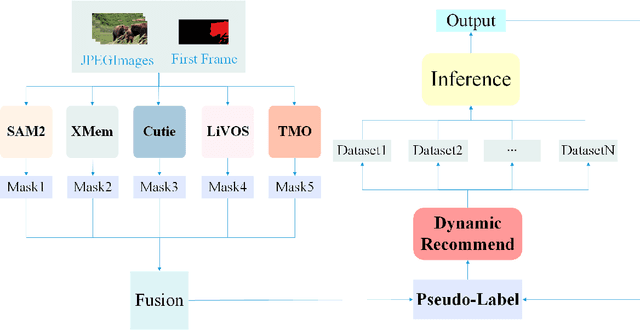

Abstract:Segmentation of video objects in complex scenarios is highly challenging, and the MOSE dataset has significantly contributed to the development of this field. This technical report details the STSeg solution proposed by the "imaplus" team.By finetuning SAM2 and the unsupervised model TMO on the MOSE dataset, the STSeg solution demonstrates remarkable advantages in handling complex object motions and long-video sequences. In the inference phase, an Adaptive Pseudo-labels Guided Model Refinement Pipeline is adopted to intelligently select appropriate models for processing each video. Through finetuning the models and employing the Adaptive Pseudo-labels Guided Model Refinement Pipeline in the inference phase, the STSeg solution achieved a J&F score of 87.26% on the test set of the 2025 4th PVUW Challenge MOSE Track, securing the 1st place and advancing the technology for video object segmentation in complex scenarios.
RadioLLM: Introducing Large Language Model into Cognitive Radio via Hybrid Prompt and Token Reprogrammings
Jan 28, 2025



Abstract:The increasing scarcity of spectrum resources and the rapid growth of wireless device have made efficient management of radio networks a critical challenge. Cognitive Radio Technology (CRT), when integrated with deep learning (DL), offers promising solutions for tasks such as radio signal classification (RSC), signal denoising, and spectrum allocation. However, existing DL-based CRT frameworks are often task-specific and lack scalability to diverse real-world scenarios. Meanwhile, Large Language Models (LLMs) have demonstrated exceptional generalization capabilities across multiple domains, making them a potential candidate for advancing CRT technologies. In this paper, we introduce RadioLLM, a novel framework that incorporates Hybrid Prompt and Token Reprogramming (HPTR) and a Frequency Attuned Fusion (FAF) module to enhance LLMs for CRT tasks. HPTR enables the integration of radio signal features with expert knowledge, while FAF improves the modeling of high-frequency features critical for precise signal processing. These innovations allow RadioLLM to handle diverse CRT tasks, bridging the gap between LLMs and traditional signal processing methods. Extensive empirical studies on multiple benchmark datasets demonstrate that the proposed RadioLLM achieves superior performance over current baselines.
Learning Evolution via Optimization Knowledge Adaptation
Jan 04, 2025



Abstract:Evolutionary algorithms (EAs) maintain populations through evolutionary operators to discover diverse solutions for complex tasks while gathering valuable knowledge, such as historical population data and fitness evaluations. However, traditional EAs face challenges in dynamically adapting to expanding knowledge bases, hindering the efficient exploitation of accumulated information and limiting adaptability to new situations. To address these issues, we introduce an Optimization Knowledge Adaptation Evolutionary Model (OKAEM), which features dynamic parameter adjustment using accumulated knowledge to enhance its optimization capabilities. OKAEM employs attention mechanisms to model the interactions among individuals, fitness landscapes, and genetic components separately, thereby parameterizing the evolutionary operators of selection, crossover, and mutation. These powerful learnable operators enable OKAEM to benefit from pre-learned extensive prior knowledge and self-tune with real-time evolutionary insights. Experimental results demonstrate that OKAEM: 1) exploits prior knowledge for significant performance gains across various knowledge transfer settings; 2) achieves competitive performance through self-tuning alone, even without prior knowledge; 3) outperforms state-of-the-art black-box baselines in a vision-language model tuning case; 4) can improve its optimization capabilities with growing knowledge; 5) is capable of emulating principles of natural selection and genetic recombination.
Knowledge-aware Evolutionary Graph Neural Architecture Search
Nov 26, 2024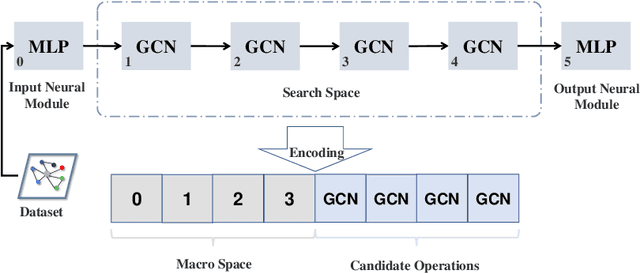
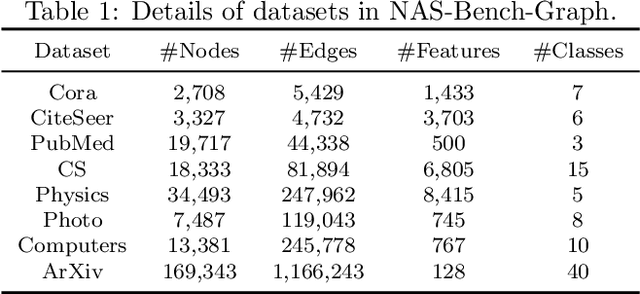
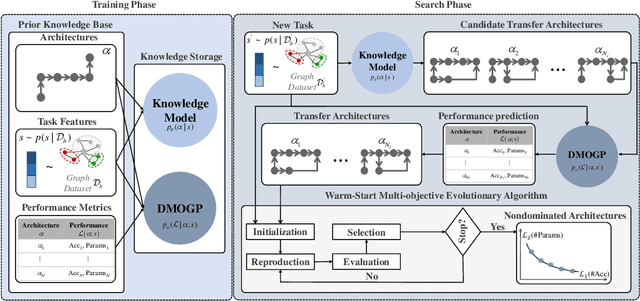

Abstract:Graph neural architecture search (GNAS) can customize high-performance graph neural network architectures for specific graph tasks or datasets. However, existing GNAS methods begin searching for architectures from a zero-knowledge state, ignoring the prior knowledge that may improve the search efficiency. The available knowledge base (e.g. NAS-Bench-Graph) contains many rich architectures and their multiple performance metrics, such as the accuracy (#Acc) and number of parameters (#Params). This study proposes exploiting such prior knowledge to accelerate the multi-objective evolutionary search on a new graph dataset, named knowledge-aware evolutionary GNAS (KEGNAS). KEGNAS employs the knowledge base to train a knowledge model and a deep multi-output Gaussian process (DMOGP) in one go, which generates and evaluates transfer architectures in only a few GPU seconds. The knowledge model first establishes a dataset-to-architecture mapping, which can quickly generate candidate transfer architectures for a new dataset. Subsequently, the DMOGP with architecture and dataset encodings is designed to predict multiple performance metrics for candidate transfer architectures on the new dataset. According to the predicted metrics, non-dominated candidate transfer architectures are selected to warm-start the multi-objective evolutionary algorithm for optimizing the #Acc and #Params on a new dataset. Empirical studies on NAS-Bench-Graph and five real-world datasets show that KEGNAS swiftly generates top-performance architectures, achieving 4.27% higher accuracy than advanced evolutionary baselines and 11.54% higher accuracy than advanced differentiable baselines. In addition, ablation studies demonstrate that the use of prior knowledge significantly improves the search performance.
Peri-midFormer: Periodic Pyramid Transformer for Time Series Analysis
Nov 07, 2024



Abstract:Time series analysis finds wide applications in fields such as weather forecasting, anomaly detection, and behavior recognition. Previous methods attempted to model temporal variations directly using 1D time series. However, this has been quite challenging due to the discrete nature of data points in time series and the complexity of periodic variation. In terms of periodicity, taking weather and traffic data as an example, there are multi-periodic variations such as yearly, monthly, weekly, and daily, etc. In order to break through the limitations of the previous methods, we decouple the implied complex periodic variations into inclusion and overlap relationships among different level periodic components based on the observation of the multi-periodicity therein and its inclusion relationships. This explicitly represents the naturally occurring pyramid-like properties in time series, where the top level is the original time series and lower levels consist of periodic components with gradually shorter periods, which we call the periodic pyramid. To further extract complex temporal variations, we introduce self-attention mechanism into the periodic pyramid, capturing complex periodic relationships by computing attention between periodic components based on their inclusion, overlap, and adjacency relationships. Our proposed Peri-midFormer demonstrates outstanding performance in five mainstream time series analysis tasks, including short- and long-term forecasting, imputation, classification, and anomaly detection.
SoccerNet 2024 Challenges Results
Sep 16, 2024
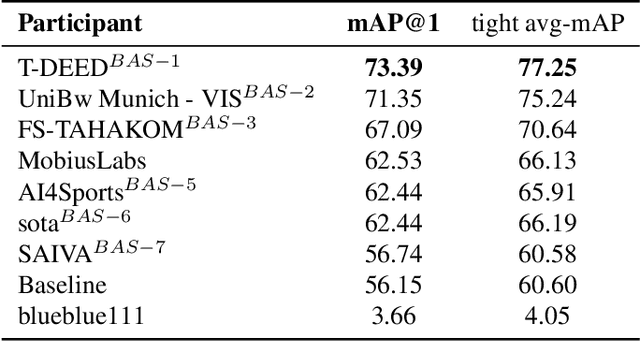
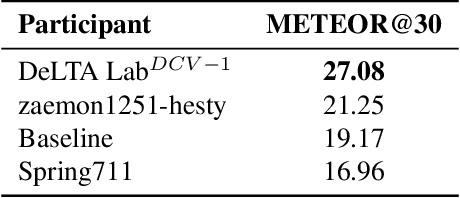
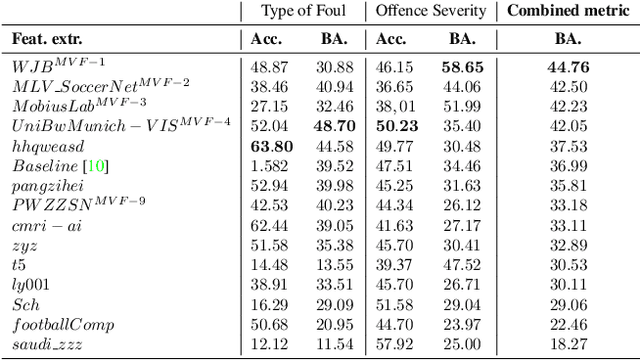
Abstract:The SoccerNet 2024 challenges represent the fourth annual video understanding challenges organized by the SoccerNet team. These challenges aim to advance research across multiple themes in football, including broadcast video understanding, field understanding, and player understanding. This year, the challenges encompass four vision-based tasks. (1) Ball Action Spotting, focusing on precisely localizing when and which soccer actions related to the ball occur, (2) Dense Video Captioning, focusing on describing the broadcast with natural language and anchored timestamps, (3) Multi-View Foul Recognition, a novel task focusing on analyzing multiple viewpoints of a potential foul incident to classify whether a foul occurred and assess its severity, (4) Game State Reconstruction, another novel task focusing on reconstructing the game state from broadcast videos onto a 2D top-view map of the field. Detailed information about the tasks, challenges, and leaderboards can be found at https://www.soccer-net.org, with baselines and development kits available at https://github.com/SoccerNet.
Renormalized Connection for Scale-preferred Object Detection in Satellite Imagery
Sep 09, 2024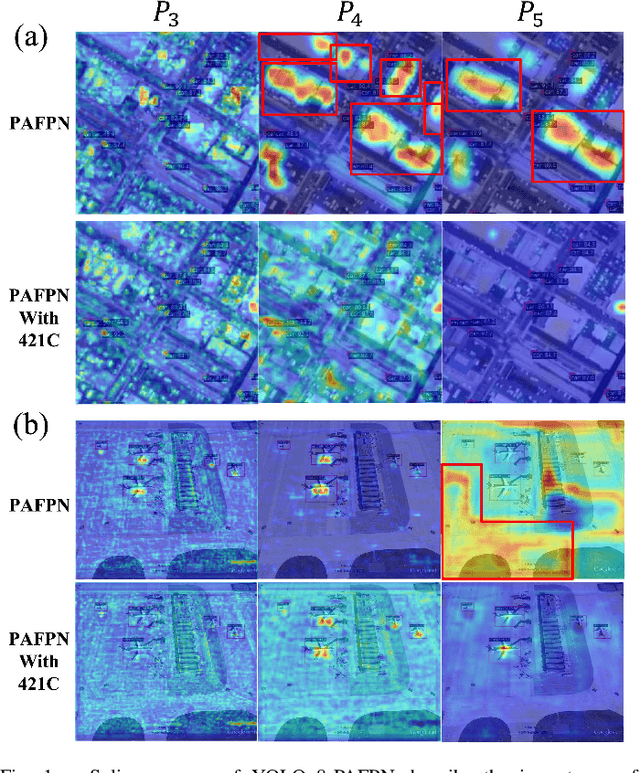
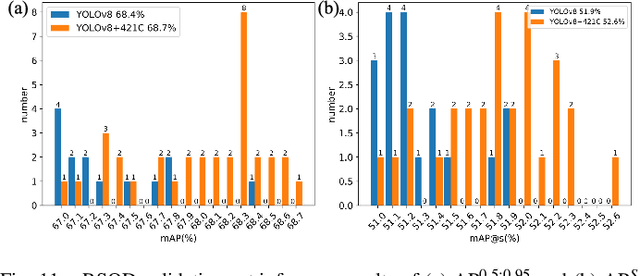
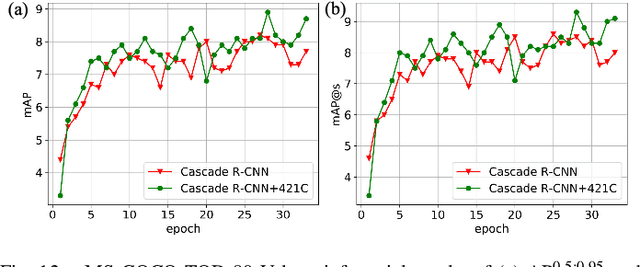
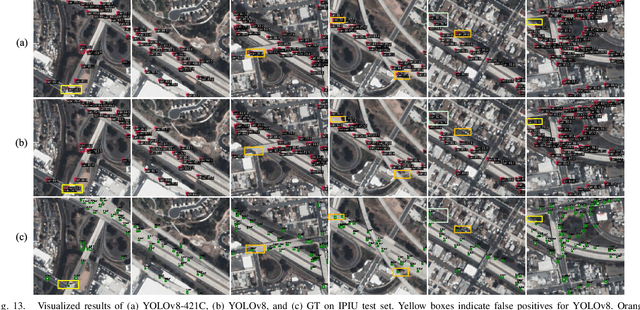
Abstract:Satellite imagery, due to its long-range imaging, brings with it a variety of scale-preferred tasks, such as the detection of tiny/small objects, making the precise localization and detection of small objects of interest a challenging task. In this article, we design a Knowledge Discovery Network (KDN) to implement the renormalization group theory in terms of efficient feature extraction. Renormalized connection (RC) on the KDN enables ``synergistic focusing'' of multi-scale features. Based on our observations of KDN, we abstract a class of RCs with different connection strengths, called n21C, and generalize it to FPN-based multi-branch detectors. In a series of FPN experiments on the scale-preferred tasks, we found that the ``divide-and-conquer'' idea of FPN severely hampers the detector's learning in the right direction due to the large number of large-scale negative samples and interference from background noise. Moreover, these negative samples cannot be eliminated by the focal loss function. The RCs extends the multi-level feature's ``divide-and-conquer'' mechanism of the FPN-based detectors to a wide range of scale-preferred tasks, and enables synergistic effects of multi-level features on the specific learning goal. In addition, interference activations in two aspects are greatly reduced and the detector learns in a more correct direction. Extensive experiments of 17 well-designed detection architectures embedded with n21s on five different levels of scale-preferred tasks validate the effectiveness and efficiency of the RCs. Especially the simplest linear form of RC, E421C performs well in all tasks and it satisfies the scaling property of RGT. We hope that our approach will transfer a large number of well-designed detectors from the computer vision community to the remote sensing community.
* 24 pages, 14 figures Journal
Meta-Learning Guided Label Noise Distillation for Robust Signal Modulation Classification
Aug 09, 2024
Abstract:Automatic modulation classification (AMC) is an effective way to deal with physical layer threats of the internet of things (IoT). However, there is often label mislabeling in practice, which significantly impacts the performance and robustness of deep neural networks (DNNs). In this paper, we propose a meta-learning guided label noise distillation method for robust AMC. Specifically, a teacher-student heterogeneous network (TSHN) framework is proposed to distill and reuse label noise. Based on the idea that labels are representations, the teacher network with trusted meta-learning divides and conquers untrusted label samples and then guides the student network to learn better by reassessing and correcting labels. Furthermore, we propose a multi-view signal (MVS) method to further improve the performance of hard-to-classify categories with few-shot trusted label samples. Extensive experimental results show that our methods can significantly improve the performance and robustness of signal AMC in various and complex label noise scenarios, which is crucial for securing IoT applications.
 Add to Chrome
Add to Chrome Add to Firefox
Add to Firefox Add to Edge
Add to Edge